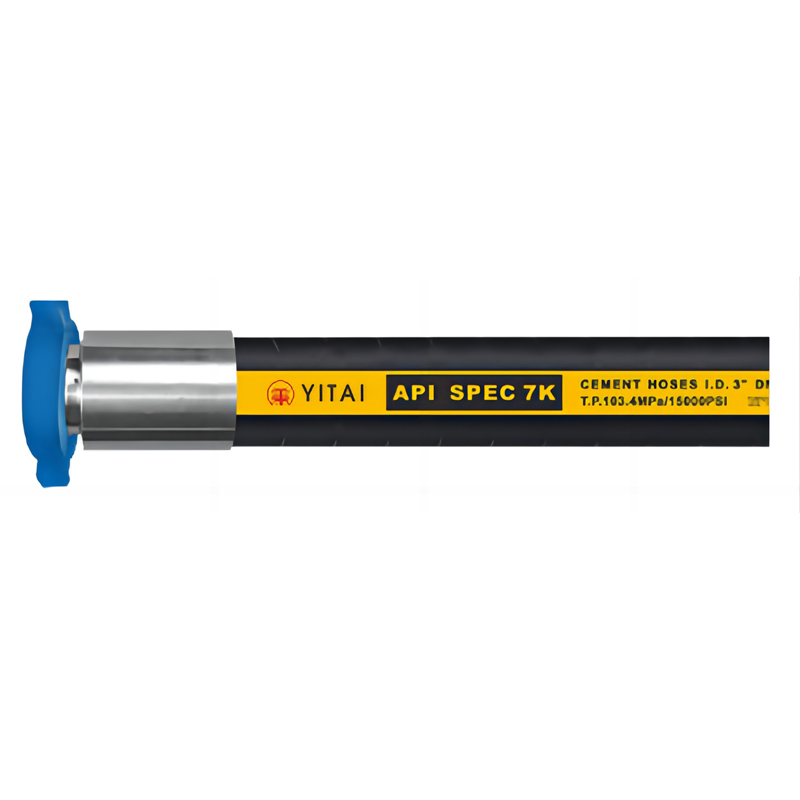Setting the Standard: API 7K High Pressure Cement Hose vs. Other Hoses in the Oil and Gas Industry
2024-03-14
In the fast-paced world of oil and gas drilling, the selection of hoses is critical to ensuring efficient and safe operations. Among the array of hoses available, the API 7K High Pressure Cement Hose stands out as a specialized solution tailored specifically for the demanding requirements of cementing operations. Understanding the distinctions between the API 7K High Pressure Cement Hose and other types of hoses is crucial for optimizing performance and achieving success in drilling endeavors. Let's delve into the key differences that set the API 7K High Pressure Cement Hose apart from its counterparts in the industry.
Purpose and Application
The primary purpose of the API 7K High Pressure Cement Hose is to facilitate the safe and efficient transfer of cement slurries during cementing operations in drilling rigs. This specialized hose is engineered to withstand high pressures and abrasive fluids encountered in cementing applications, ensuring reliable performance and operational efficiency.
In contrast, other types of hoses may serve different purposes and applications within the oil and gas industry. For example, suction hoses are used for the transfer of fluids such as mud, water, and oil, while hydraulic hoses are utilized for hydraulic power transmission in drilling equipment.
Construction and Design
One of the key distinctions between the API 7K High Pressure Cement Hose and other hoses lies in their construction and design. The API 7K High Pressure Cement Hose is constructed with specialized materials and reinforced layers to withstand high pressures, abrasion, and corrosion encountered in cementing operations.
Other hoses may feature different construction materials and configurations optimized for their intended applications. For instance, suction hoses may incorporate softer materials for flexibility and ease of handling, while hydraulic hoses often feature high-strength steel wire braids for pressure resistance and durability.
Pressure Rating
Another notable difference between the API 7K High Pressure Cement Hose and other hoses is the pressure rating. The API 7K High Pressure Cement Hose is designed to handle high pressures typically ranging from 5,000 to 15,000 psi, ensuring reliable performance in the rigorous conditions of cementing operations.
In comparison, other hoses may have lower pressure ratings suited to their specific applications. For example, suction hoses may have pressure ratings ranging from a few hundred to a few thousand psi, depending on the fluid being transferred and the operating conditions.
Compliance with Standards
The API 7K High Pressure Cement Hose is specifically designed to comply with stringent standards set forth by the American Petroleum Institute (API), ensuring adherence to industry benchmarks for performance, safety, and quality. Compliance with API standards provides assurance to operators and contractors of the hose's reliability and suitability for use in critical cementing operations.
While other hoses may also adhere to industry standards and regulations, their specifications and certifications may vary depending on their intended applications and manufacturers.
Conclusion
In conclusion, the API 7K High Pressure Cement Hose stands apart from other types of hoses in the oil and gas industry due to its specialized design, construction, and purpose-built capabilities for cementing operations. With its high-pressure rating, abrasion resistance, corrosion resistance, and compliance with API standards, this specialized hose ensures reliable performance, efficiency, and safety in drilling endeavors. Understanding the distinctions between the API 7K High Pressure Cement Hose and other hoses is essential for selecting the appropriate hose for specific applications and optimizing operational outcomes in the challenging environments of oil and gas drilling.



